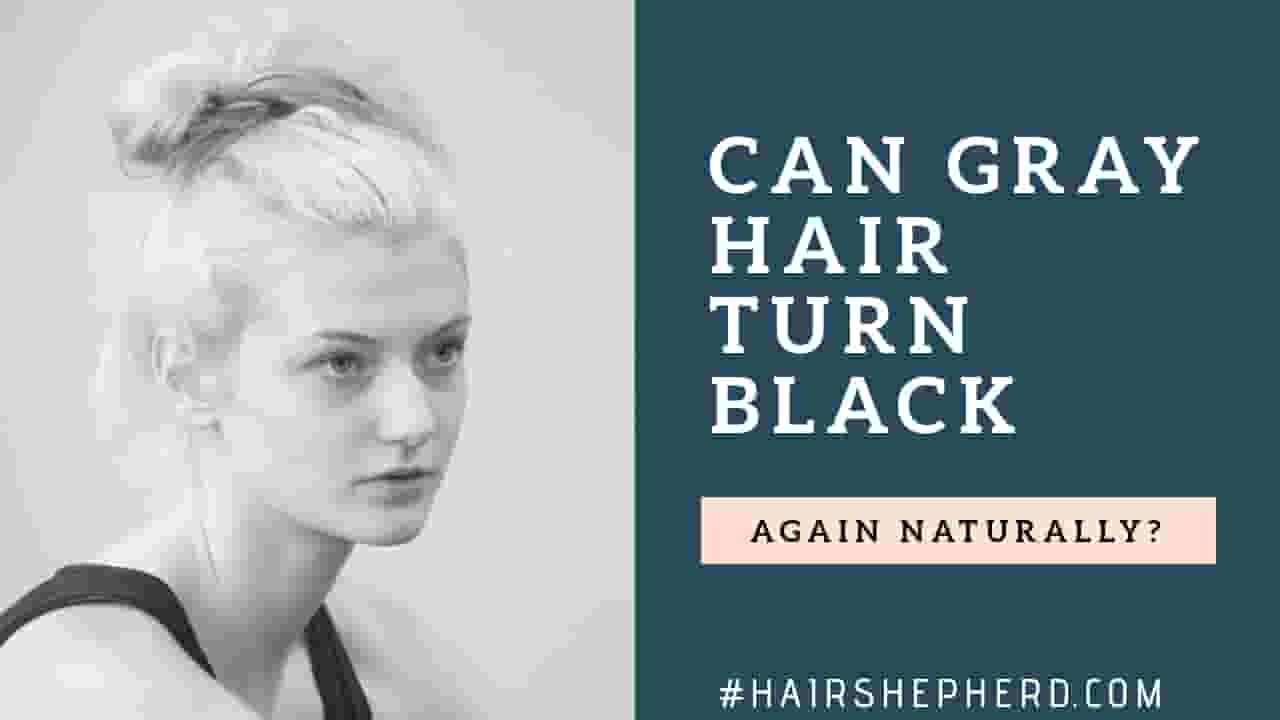The phenomenon of hair turning white or gray—a natural capstone in the journey of aging—has intrigued humanity across cultures for centuries. The notion that white hair can revert to its original hue of black carries both a scientific and mythological allure. But does it unearth deeper cultural implications? This inquiry delineates the myths surrounding hair color transformation, particularly white to black, from a cultural relativism perspective. It seeks to explore the beliefs ingrained in various societies concerning aging, dignity, and identity, while posing a provocative question: could the quest for black hair manifest a deeper cultural discontent with aging itself?
To understand the layers of beliefs regarding the color of hair and its implications, one must first examine the biological mechanics of hair pigmentation. The melanin responsible for our hair color diminishes with age due to varying reasons, including genetics and environmental factors. As individuals age, melanocytes—cells that produce melanin—atrophy, leading to the iconic spectrum of white, gray, or silver locks. However, the presumption that this transformation could be reversed taps into a colossal reservoir of cultural narratives regarding age and aesthetics.
The struggle against the natural process of graying has become emblematic within many societies. In Western contexts, the equation of black or darker hair with youth, vitality, and attractiveness shapes societal norms. This prescriptive view manifests in industries ranging from beauty products to social paradigms where individuals resort to dyeing their hair as an act of rebellion against the encroachment of time. The multifaceted industry surrounding hair dyes and treatments is a testament to the powerful grip these ideologies hold in the collective consciousness.
In juxtaposition, various Eastern cultures tend to embrace the graying process as a marker of wisdom, learned through experience. The perceived honor imbued in maintaining white hair reflects traditional values, where aging is frequently correlated with honorable status rather than an indication of decline. The culturally relative approach to aging and hair color underscores an essential question: is the preference for black hair an egocentric pursuit, or does it signify a societal critique of aging?
Further complicating these notions are indigenous belief systems that ascribe spiritual significance to aging. For example, numerous Native American groups celebrate the transition to elderhood, often ritualizing changes associated with aging, such as the appearance of white hair. Their beliefs postulate that aging confers a deeper connection to the spirit world and communal wisdom, positioning white hair not as a deficit, but as a gift of experience. Thus, to consider the potential for one’s hair to return to black may be less about vanity and more about reclaiming a youth that is socially revered.
Aesthetic expressions of youth do not culminate solely in the act of dyeing hair; they ripple into various fields encompassing art, literature, and media. For instance, characters in movies or literature who sport black hair are often depicted as vibrant, adventurous, or even mischievous. In contrast, white hair frequently invokes notions of pacification, wisdom, or even villainy. By analyzing these portrayals, one can discern a broader societal schema deeply rooted in cultural symbolism, where darkness represents vitality and light symbolizes the quietude often associated with old age.
However, such portrayals are not universal. In certain African cultures, the aesthetics of white hair or grayness symbolize beauty, a visual testament to the history of one’s life experiences. These divergences challenge the traditionally Eurocentric viewpoint and illuminate a crucial aspect of cultural relativism: norms and values are not monolithic, and they cannot be relegated to a singular understanding. Each culture engages with the concept of aging and hair color in remarkably different manners, prompting an essential reevaluation of what it means to age gracefully.
As cross-cultural exchange becomes more prevalent in an interconnected world, the stigmas and myths surrounding aging and its visible markers, such as hair color, could continue to shift. The dialogue surrounding whether white hair can turn back to black is, therefore, reflective of broader societal anxieties around aging, resilience, and the aesthetic values achievable through various means. The examination of this topic suggests the need for a recalibration of understanding; individuals should be encouraged to embrace their natural transitions rather than combat them
The existential question remains: if society prizes youth over the wisdom of age, how does that affect interpersonal relations and societal structures? Does the aspiration to revert to youthful attributes—like black hair—indicate an intrinsic fear of the aging process or a rejection of the value that aging can offer? The interplay between societal perceptions and personal identity is complex, and unpacking these layers of beliefs reveals fertile ground for anthropological discourse.
Ultimately, the inquiry surrounding the transformation of hair from white back to black transcends mere aesthetics or biological science. It implores a deeper investigation into the cultural narratives that influence our perceptions of aging and beauty. As such, harmonizing these disparate cultural narratives could foster an enriched understanding of life stages and the unrelenting beauty inherent in the passage of time.
